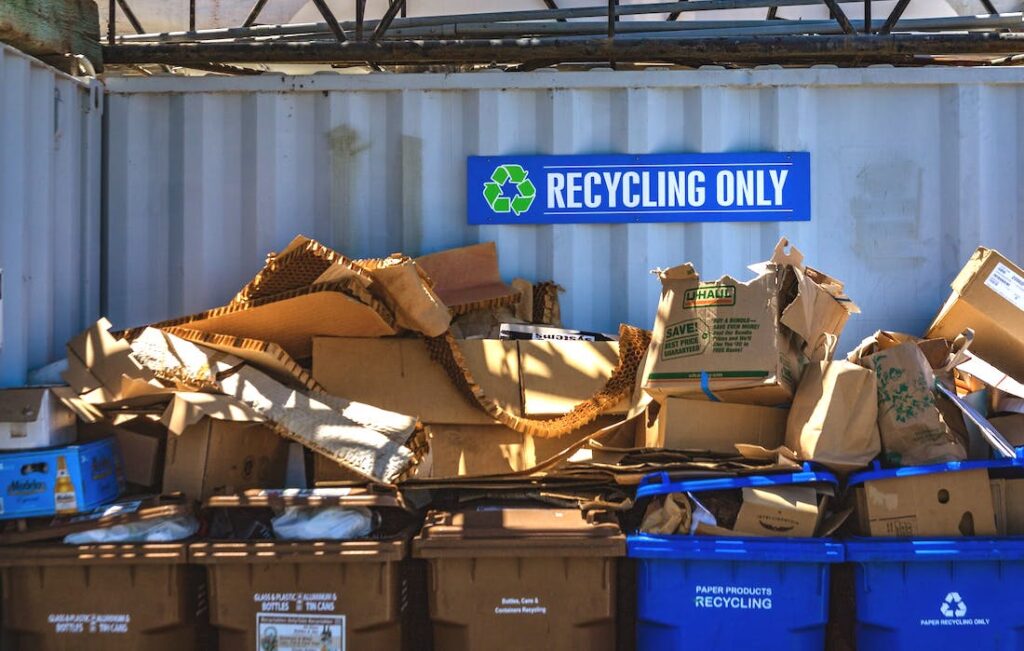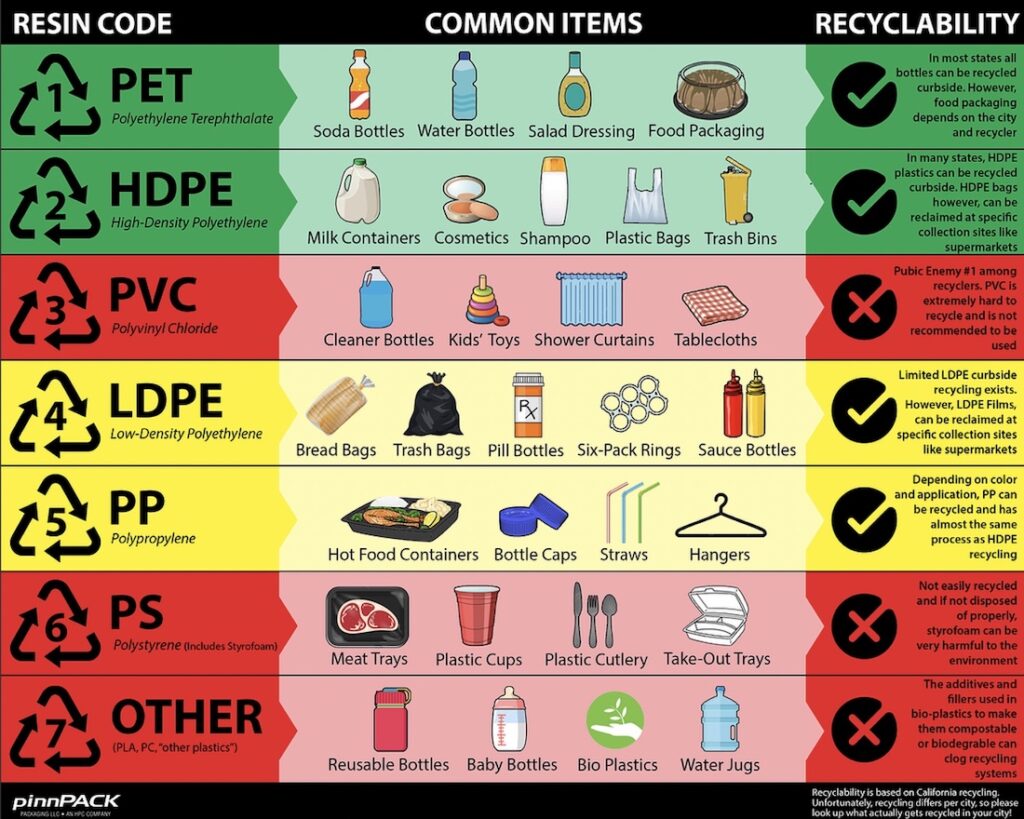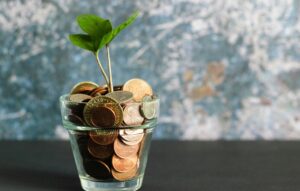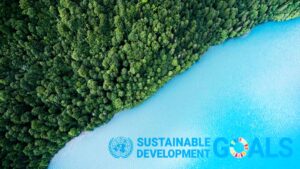There is a lot of information—and a lot of misinformation—out there about recycling. It makes the entire process feel confusing and muddled. How does it work? And is it truly as effective as companies and plastic-producers make it out to be?
The short answer: no. The effectiveness of recycling is quite limited (more on this later). Does this mean we should stop recycling? Absolutely not. What it does mean is that we need to find another solution to our trash problem. You may have heard the phrase, “we can’t recycle our way out of climate change,” and it’s true. Our waste problem far exceeds the quantity and quality of our recycling. The truth is that people—Americans specifically—have a “stuff” problem. We have too much of it. And we’re constantly being told by companies interested in increasing their bottom line that our stuff is disposable.
Buy it, use it once, toss it, repeat.
It’s an expensive way of life—not just for our pockets, but for the planet. Meanwhile, companies are making billions of dollars in profits. It’s time to stop the mass production AND mass consumption of products we just don’t need.
So, what do we do about it?
Reduce. Reuse. Recycle. Refuse.
You were likely taught “Reduce, Reuse, Recycle” in school, but environmentalists have recently tacked on a fourth word to the end of the phrase, “Resist/Refuse.” In a similar vein to “Reduce,” it’s about limiting our purchases to the things we truly need; living as a conscience consumer and moving towards a zero waste society.This doesn’t mean we all need to live fully minimalist lifestyles. We’ll be perfectly transparent: a fully zero waste lifestyle is not achievable for most people or necessarily one you want to live, and that’s perfectly okay. It’s more important that we acknowledge our own consumerism and buying habits and be more conscious of our purchases; reducing the amount we buy to simply that which we need and refusing the rest.
But what about the stuff that we do need to buy? How do we dispose of those things? That’s where reuse and recycle come into play. Reuse what you can, recycle what’s left. Recycling should always be the last step; the thing you do when all other options are eliminated.
But now we’ve come full circle to the question of how recycling works. What can you recycle and where? Is recycling the same everywhere you go? Does it really work? And why aren’t all plastics recyclable?
We’re tackling these questions and much more! Welcome to Recycling 101.
Let’s get started.
What Is Recycling?
It may seem like an obvious question with an obvious answer, but a survey from the World Economic Forum, SAP and Qualtrics showed that even though 75% of Americans support recycling, only 34% of them actually do it. Individuals reported that the confusion of the system prevents them from taking part. A second survey conducted by OnePoll shows that 64% of Americans self-reported that they did not know or understand their local recycling guidelines. That’s a lot of people!
So, to make everything clearer, let’s start from scratch.
Recycling is, simply, the process of turning waste into new materials or objects. Boom, simple.
The more complicated question is what can be recycled? Not everything is recyclable. Food waste, for example, is compostable but not recyclable. To be recyclable, an item must be able to reobtain most, if not all, of the properties it had in its original state. (For example, aluminum, which is infinitely recyclable, can be melted down and then reformed into a new aluminum object without warping or growing weaker over time.)
You’re probably familiar with the common recyclables—paper, aluminum, and glass—but you can also recycle:
- Cardboard
- Steel and other metals
- Batteries*
- Clothes*
- Electronics*
- Wood*
Both glass and metals are infinitely recyclable. Paper can be recycled roughly five times before it degrades too far and becomes waste.
Have you noticed a big one missing from this list? What about plastics? Let’s take a closer look…
*Typically requires specialized recycling and cannot be recycled curbside (via single stream recycling programs). Look for service providers in your area to find out where you can take these items for recycling.
The Recyclability of Plastics
As much as petrochemical companies and other benefiting corporations would love to have you believe that recycling plastic is no big deal and it’s totally fine to buy just one more “disposable” water bottle, the truth is that plastics very much have a shelf life, not all plastics can be recycled, and those that can are NOT infinitely recyclable. Plastics that are recyclable can only be recycled once or twice before they degrade too much to be repurposed, becoming plastic waste.
Have you noticed those symbols on plastic products; the ones with three arrows circling a number? Those are referred to as the “Chasing Arrows” and, despite popular belief, they DO NOT indicate whether or not a product is recyclable. They simply denote what kind of plastic the product is made from. Check out this quick guide from pinnPACK that breaks down these material types and their relative recyclability.
Keep in mind that this graphic is specific to California and you always want to double check with your service provider about what is recyclable where you live!
What about mixed materials?
A lot of what is on the shelves today are items made up of multiple materials; plastic and paper, glass and aluminum, metal and cardboard—the list goes on. So how are you supposed to recycle these items? Are they even recyclable at all?
Unfortunately, the answer is both yes and no. If you can separate the materials from one another (for example, taking the aluminum lid off a glass mason jar), you are free to drop them—separately—into your single stream recycling bin and all is well with the world. However, if the materials are not easily separated, this can be a problem. Within the recycling stream in general, mixed material objects are some of the highest offenders when it comes to recycling contamination. Things like toothpaste tubes (frequently a combination of plastic and aluminum) and takeout coffee cups (plastic-lined paper) are often unable to be recycled.
If you are unsure about whether or not a certain item is recyclable, check out this guide from Waste Management. And don’t forget to check with your recycling provider!
Why Recycle?
Because it saves a significant amount of natural energy and resources. In fact, the energy needed to produce recycled aluminum cans is 95% less than what is required to create them initially from scratch. For paper, this number is 60%. Recycling helps preserve the environment; protecting land, water, and resources from overuse and preventing more and more waste from entering landfills.
At the end of the day, recycling is the responsible thing to do to protect the natural world, human health, and the future of…well…everyone. It’s pretty important.
So then why is the U.S. so bad at recycling?
Okay, okay, okay—so, technically the U.S. is neither the best nor the worst country at recycling. No country is great at recycling. What this does mean is that there’s definite room for improvement. According to a 2018 report from the EPA, the United States produced 267+ million tons of waste in 2017. Of this, only 94.2 million tons were recycled or composted.
However, there’s a lot that can be done to address these things, starting with educating households and the U.S. population at large about what can and cannot be recycled. New innovations and the way recycled goods are utilized are also changing on a regular basis. So why aren’t we doing more of it?
Limited Access And Expense
When it comes to individuals, the answer usually boils down to a lack of convenient access to recycling. While recycling programs are becoming more and more common in urban areas, many rural communities still do not have the means or access to full-scale recycling services.
For those communities that do have a recycling service, it can be an expensive and somewhat unreliable investment. For example, cities across the country are abandoning glass recycling, choosing to throw out any glass that ends up in their recycling stream despite the fact that glass is one of the most recyclable materials out there. And why? Cost. After China refused to continue importing recycled waste from countries around the world in 2018, the demand for recycled glass has become relatively unpredictable. For many small towns, the recycling process without a guaranteed buyer to purchase the recycled materials is a major expense; in some cases, even a money loser.
Which is only compounded by the fact that recycling programs frequently compete for funding with other local institutions like schools and the police. Currently, there is no dedicated national investment in recycling—not to the level that we need right now—and since the U.S. does not have a federal recycling program, the burden of recycling is on the communities across the country that do have access. The way one city or county recycles might be different from another city or county in the same state, making state to state comparisons even more difficult.
And then there’s the problem of single-stream recycling.
While it’s true that this form of recycling lifts much of the burden from individuals and households, it leaves significantly more room for error when the recyclables reach the sorting facility. As a result, 25% of all U.S. recycling produced is considered contaminated and unusable.
A staggering percentage that many scholars trace back to the American “illusion of recycling.”
The Illusion of Recycling
Ed Humes, author of Garbology, says it best when he states, “…the waste producing public needs to fix the ‘illusion of recycling’—people’s ambitions to put trash, like plastic bags, in the recycling bin and feel good about it, out of sight and out of mind.”
We’re told that recycling makes you a better person. It’s something we should all be doing to make the planet better. And yes, at the very least, this second statement is true! But uneducated recycling is just as bad as not recycling at all. We need to be conscious about what we’re putting in the bin, and we should be confident that it’s supposed to be there. “Wish-cycling” isn’t helpful; it only clogs up the gears of the process (literally), making it less efficient and more resource-demanding—the opposite of what recycling in general is trying to achieve.
It is critical for all of us to make sure that we’re recycling properly. Now let’s talk about how.
How the Recycling Process Works
What happens after the recyclables in your bin are collected or after you drop off your recycling at a community pickup location? We could write out a long, drawn-out answer for you, but then we thought… why would we do that when Hank Green explains it so much better on his SciShow YouTube Channel?
Take a Look:
(All credit: Hank Green, SciShow on YouTube)
So now you know the ins-and-outs of recycling. But what about how to recycle where you live? We’ve put together an assortment of resources to help you discover recycling service providers in your community, including specialized recycling providers for things like electronics and fabrics.
- Recycling information by zip code
- Search for curbside recycling where you live or by recycling type (e.g., electronics)
- Recycling the “unrecyclable” with TerraCycle
- Check your local government website for instructions and tips
- Browse social media and online forums; join local groups and receive recommendations from fellow community members
- Some regions also have local coalitions or associations focused on recycling/waste reduction




